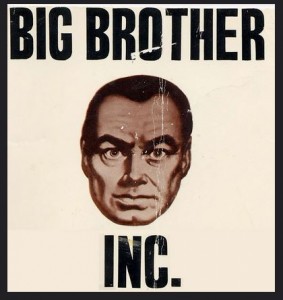
Good leaders are very rare. In fact, Gallup estimates that just 10% of people have these innate leadership talents: motivate individuals and teams, build strong relationships, be accountable and be assertive plus make decisions based on productivity and results, not politics. Yes, just 10%. And even with another 20% having the talent for some of these areas, that still points to a majority (70%) of people in leadership roles being incompetent.
I know I’m not alone having experienced, first hand, different flavors and spectrums of this leadership incompetence as I’m able to count the good leaders on just one hand. Why does this happen so often? Generally, within companies, the ‘wrong’ people get promoted because of tenure or performance as an individual contributor. And then they are And in Silicon Valley’s startup culture, these bros and jerks have never received any leadership training and there are no HR or cultural checks and balances to keep their self-awareness high and their egos in check.
Leadership incompetence is hard to cure
While ignorance may be curable (Robert Heinlein), leadership incompetence is very hard to cure because of the Dunning Krueger Effect. Dunning and Krueger’s research, summarized in Revisiting Why Incompetents Think They’re Awesome (2012), showed us that incompetent people will fail to recognize their own lack of skill, will fail to recognize the extent of their inadequacy, and will fail to accurately gauge the skill in the others.
Being a good leader takes self-awareness. If you are aware of how your behaviors, attitudes, and moods impact the workings of your team, you’re well on your way to becoming one of the “good ones”

The origin of team dysfunction is always the leader
We’re all familiar with what Tolstoy’s posited in Anna Karenina, that “happy families are all alike and every unhappy family is unhappy in its own way.” This analogy also applies to teams at work. Namely, that happy, productive teams are all alike – with trust at the core – and every unhappy team is unhappy in its own way.
Forbes’ Coaches Council identified 14 different ways a leader might diagnose dysfunction on her own team and, like the adult in the home being the catalyst in the unhappy family analogy, a dysfunctional team’s behaviors are in reaction to the habits, attitudes and behaviors of the leader. While every adult in the workplace is responsible for his own behavior, Shawn Casemore, author of Operational Empowerment may have said it best on his blog on this topic: “The origin of dysfunction in an organization is always the same. It’s the leader of the team.”
If your team is dysfunctional, don’t be seduced by Dunning Kreuger effect and let it perpetuate. Take these tips into account, up your leadership game, and stop creating the dysfunction.
Team dysfunction is never one person’s “fault”
Dysfunctional leaders will focus their attention on one person as “the problem” and then their systemic bias ends up scapegoating or ostracizing this person. This passive aggressive behavior is a clear sign of a leader’s incompetence as it “teaches” the rest of the team that safety comes with fitting in and not through diverse points of view.
Skilled leaders, on the other hand, resist the urge to ambush any one member because they understand no one is coming to work with the intent to upset the boss and foil her plans. Rather, every person’s behavior on the team is influenced both positively and negatively by the leader’s own attitudes, moods and behaviors.
Withdrawal is a behaviors which may be called out as a problem, but is, in fact, a reaction to the wider dysfunction. Blaming or scapegoating an individual on the team won’t “cure” the team’s dysfunction, because the behavior is a symptom, not the cause of it. In fact, it’s the whole team which needs a tune-up, including the leader.
Your behavior creates fear
Leaders, if your team members generally defer to you, I’m sorry to say that it’s not because you’re ever so wise, charismatic and smart. On the contrary, if you are surrounded with yes-men it is because your behaviors create fear.
Google’s Project Aristotle research demonstrated that trust and safety are necessary for high performing teams. Team members need to feel “psychologically safe” both with you as their leader and with their team mates.
At work, people’s fears fall into 3 main categories: being misunderstood (their motives or credibility questioned), being excluded (ostracized for not conforming) and being invisible (not heard). All of these fears are inextricably tied to our core feelings of value and sense of worth and if your team is spending the majority of their days outside their psychologically safe zone, then it is draining their creative energy and productivity — and likely leading to dysfunctional behaviors.
Strong leaders learn how to manage conflict in ways that maintain psychological safety of the people on the team, in order to have the needed conversations necessary to productive growth. Unfortunately, too many conflict-avoidant leaders fall into the next trap…the sidebar conversation.
Sidebar conversations continue dysfunction
Sidebar conversations are those hush-hush tete-a-tete’s among sub groups of team members (with or without the leader) which purposefully exclude other relevant members and are akin to gossip and just as dysfunctional.
When sidebar conversations are driven by the leader, you’re normalizing scapegoating and instilling fear – because if you’re comfortable with sidebar conversations with one team member about another team member, you might be doing the same to them.
This is also evidence of a dysfunctional hub and spoke management style. This approach of being the primary means of keeping activities synchronized, it actively discourages the team from engaging with their team members on topics outside their direct responsibilities. They forgo sharing their insights and thoughts of strategic relevance because of a politeness ritual inherent in the hub and spoke setup.
You don’t communicate as well as you think you do
You think you’re communicating effectively, but the evidence clear shows that everyone overestimates their ability to communicate. As a team leader, you need to take this insight to heart and endeavor to understand how each of your team members thinks and feels so you can best tailor your communication style to what suits them. This small effort to adapt on your part will help build strong relationships and enhance trust. Maya Angelou said it best: “People will forget what you said and did, but they will never forget how you made them feel.”
Next time you find yourself thinking about the dysfunctional behavior on your team members, take a step back and explore how your attitudes and behaviors are contributing to what you’re seeing. Your team will not begin to work better together until you look at your role in it.
Business & Finance Articles on Business 2 Community(47)







